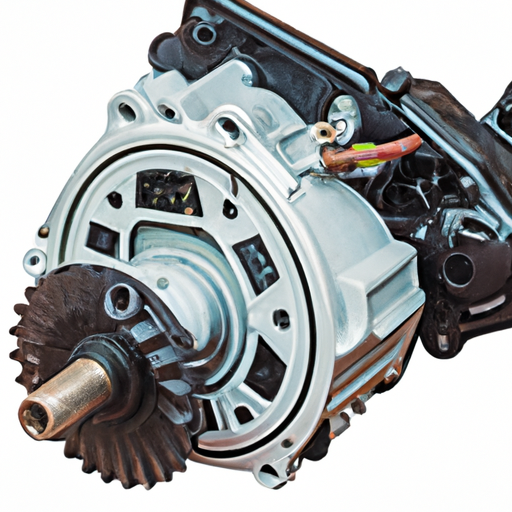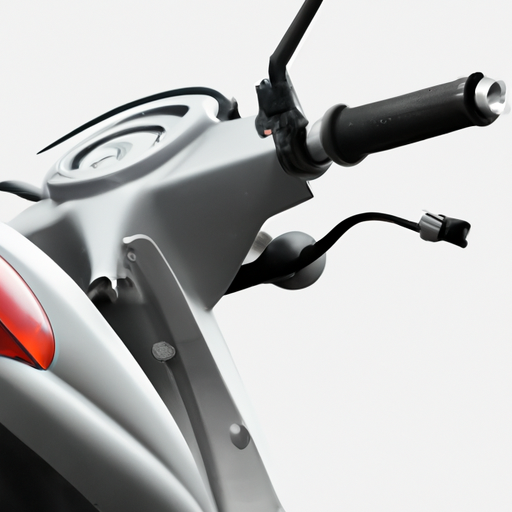Have you ever noticed some unusual sounds coming from your scooter? Perhaps it’s been running a bit sluggishly lately or experiencing a decrease in overall performance. If so, it’s possible that the culprit behind these issues could be a bad scooter variator. But what exactly is a variator, and what are the symptoms of a faulty one? Don’t worry, we’ve got you covered. In this article, we’ll delve into the world of scooter variators, discussing how they work, what signs to look out for when they go bad, and how to address the issue. So, let’s get started!
So, before we dive deeper into the topic, let’s start by understanding what a scooter variator actually is. In simple terms, a variator is a component in the scooter’s transmission system that allows for smooth and continuous shifting between gears. Think of it as the “brain” that regulates the power distribution to the wheels. Now, when a variator goes bad, it can cause a variety of issues. You may notice strange noises or vibrations coming from your scooter’s engine. It might also struggle to accelerate or have a jerky and uneven ride. These are all telltale signs that your variator is malfunctioning. But worry not, in the next section of this article, we’ll explore some other symptoms in more detail and discuss the steps you can take to address the issue. Stay tuned!
Symptoms of a Bad Scooter Variator
What is a scooter variator?
A scooter variator is a crucial component in a scooter’s transmission system. It is responsible for controlling the transmission ratio between the engine and the rear wheel, allowing the scooter to adjust its speed and power based on the rider’s throttle input. The variator consists of a set of rollers, a movable faceplate, and a fixed faceplate. As the engine revs increase, the rollers move outward, forcing the faceplates to close or open, altering the transmission ratio.
Definition and Function
The scooter variator plays a vital role in the overall performance and smooth operation of the scooter. It ensures the power generated by the engine is efficiently transmitted to the rear wheel, resulting in optimal acceleration and top speed. Additionally, the variator allows for seamless shifting between gears, providing a smooth and comfortable riding experience.
Importance of a Good Scooter Variator
Having a well-functioning scooter variator is essential for several reasons.
Enhanced Performance
A properly functioning variator can significantly enhance a scooter’s performance. It allows the engine to generate maximum power by maintaining the ideal transmission ratio. With a good variator, you can expect improved acceleration, faster top speed, and smoother gear shifts.
Smooth Transmission
A well-maintained variator ensures a smooth and seamless transmission between gears. It prevents jerky or abrupt gear changes, allowing for a more comfortable and enjoyable riding experience. A properly functioning variator also helps to reduce wear and tear on the engine and other transmission components.

Common Symptoms of a Bad Scooter Variator
Like any mechanical component, a scooter variator can develop problems over time. If you notice the following symptoms, it may indicate that your scooter variator is failing or in need of repair.
Loss of Power
One of the primary signs of a bad variator is a loss of power. You may notice that your scooter is not accelerating as quickly as it used to, or it struggles to reach its top speed. This can be particularly noticeable when riding uphill or carrying a passenger.
Sluggish Acceleration
A faulty variator can lead to sluggish acceleration. Your scooter may take longer to reach the desired speed, and you may feel a lack of responsiveness when twisting the throttle. This can be frustrating and may affect your overall riding experience.
High RPM at Idle
If you observe that your scooter’s engine is running at a higher RPM than normal when idling, it could be a sign of a bad variator. The variator’s rollers may not be moving freely, causing the transmission to engage at a higher gear ratio even when the scooter is stationary.
Whining Noise
A worn-out or damaged variator can produce a distinct whining noise while the scooter is in motion. This noise may increase with higher speeds or when the variator is under load. It is important not to ignore this noise, as it can indicate a more serious issue with the transmission system.
Vibrations
An imbalanced variator or worn-out rollers can cause vibrations in the scooter. These vibrations can be felt through the handlebars, footrests, or seat. If you experience unusual vibrations while riding, it is advisable to have your variator inspected and repaired if necessary.
Diagnosing a Bad Scooter Variator
If you suspect that your scooter variator is causing issues, there are a few diagnostic tests you can perform to confirm the problem.
Visual Inspection
Begin by visually inspecting the variator for any signs of damage or wear. Check for cracks, excessive play, or visible wear on the rollers, faceplates, and other components. Ensure that the variator is clean and free from any debris or dirt.
Belt Slip Test
To perform a belt slip test, start the scooter and engage the rear brake. Throttle the engine to around half of its maximum RPM and observe the movement of the variator faceplates. If the variator operation appears jerky or the faceplates do not move smoothly, it indicates a problem with the variator.
Roller Sliding Test
Another method to diagnose variator issues is to perform a roller sliding test. Remove the variator cover and inspect the rollers. Gently slide the rollers to check if they move freely. If the rollers are stuck or do not slide smoothly, it indicates a problem with the variator assembly.

Causes of a Bad Scooter Variator
Several factors can contribute to the deterioration or failure of a scooter variator.
Worn-out Parts
Over time, the various components of the variator, such as the rollers, faceplates, and bushings, can wear out. This can lead to improper operation and a decrease in performance.
Lack of Maintenance
Regular maintenance is essential for the longevity and proper functioning of the scooter variator. Failure to clean and lubricate the variator can result in the accumulation of dirt and debris, causing premature wear and reduced performance.
Contaminated Transmission Fluid
Contaminated or improper transmission fluid can also affect the operation of the variator. The transmission fluid plays a crucial role in maintaining the variator’s smooth operation and cooling the internal components. If the fluid becomes contaminated or degraded, it can lead to increased friction and wear.
Steps to Replace a Bad Scooter Variator
If you determine that your scooter variator needs to be replaced, follow these steps:
Gather Necessary Tools
To replace the variator, you will typically need basic hand tools such as screwdrivers, wrenches, and pliers. You may also require a variator holding tool and a torque wrench to properly install the new variator.
Elevate Scooter
Before working on the variator, ensure the scooter is securely and safely elevated using a lift or sturdy jack stands. This will provide easy access to the variator assembly.
Remove Variator Cover
Locate the variator cover and remove any bolts or screws securing it. Carefully lift off the cover, being mindful of any gaskets or seals that may be present. Place the cover in a clean and safe location.
Replace Variator Assembly
Inspect the variator assembly for any signs of damage or wear. If necessary, replace the entire assembly with a new one, ensuring that it matches the specifications of your scooter model. Install the new variator assembly in the reverse order of removal, following any specific instructions provided by the manufacturer.
Preventing Scooter Variator Issues
To minimize the risk of variator problems, it is important to follow these preventive measures.
Regular Maintenance
Routine maintenance is crucial to keep the variator in good working condition. This includes cleaning the variator, replacing worn-out rollers and faceplates, and properly lubricating the components. Refer to your scooter’s owner’s manual for specific maintenance guidelines.
Using Recommended Transmission Fluid
Always use the recommended transmission fluid for your scooter. The fluid requirements may vary depending on the scooter model and manufacturer. Using the correct transmission fluid will ensure optimal performance and longevity of the variator.
Cost of Repairing or Replacing a Scooter Variator
The cost of repairing or replacing a scooter variator can vary depending on several factors.
Factors Affecting Cost
The cost of a new variator assembly, labor charges, and the specific model of your scooter can all impact the price. Additionally, if other components of the transmission system have been damaged and require repair, it can further increase the overall cost.
Average Repair Cost
On average, the cost of replacing a scooter variator can range from $100 to $300, including parts and labor. However, this cost can vary significantly depending on the factors mentioned above.
Budgeting Tips
To save on repair costs, consider purchasing a high-quality variator assembly and performing the replacement yourself if you have the necessary skills and tools. Additionally, regular maintenance and inspections can help identify any potential variator issues before they escalate into more significant problems.
Professional vs. DIY Repair
When it comes to repairing or replacing a scooter variator, there are advantages to both professional and DIY approaches.
Benefits of Professional Repair
Seeking professional repair ensures that the task is carried out by experienced technicians who have the necessary knowledge and expertise. This can help prevent costly mistakes and ensure optimal performance and longevity of the variator.
Benefits of DIY Repair
Performing the repair yourself can save you money on labor costs. It can also be a rewarding experience for those interested in learning about the mechanics of their scooter. However, it is important to have the necessary skills, tools, and resources to carry out the repair correctly and safely.
Conclusion
A scooter variator is a vital component of the transmission system, and a faulty variator can lead to a variety of symptoms and issues. By recognizing the common symptoms and taking appropriate action, such as conducting diagnostic tests and performing regular maintenance, you can ensure that your scooter’s variator operates optimally for a smoother and more enjoyable riding experience. If you’re unsure about the repair, it is always wise to consult with a professional technician to identify and resolve any variator-related problems.
